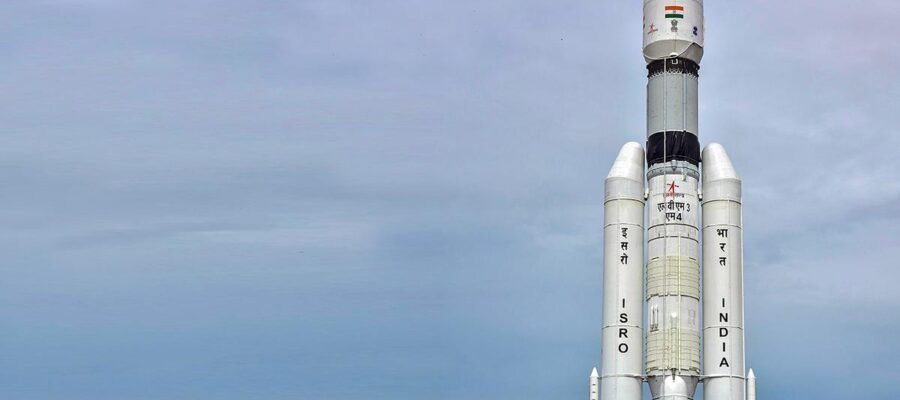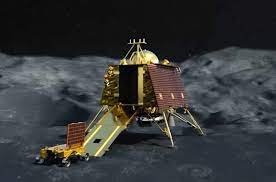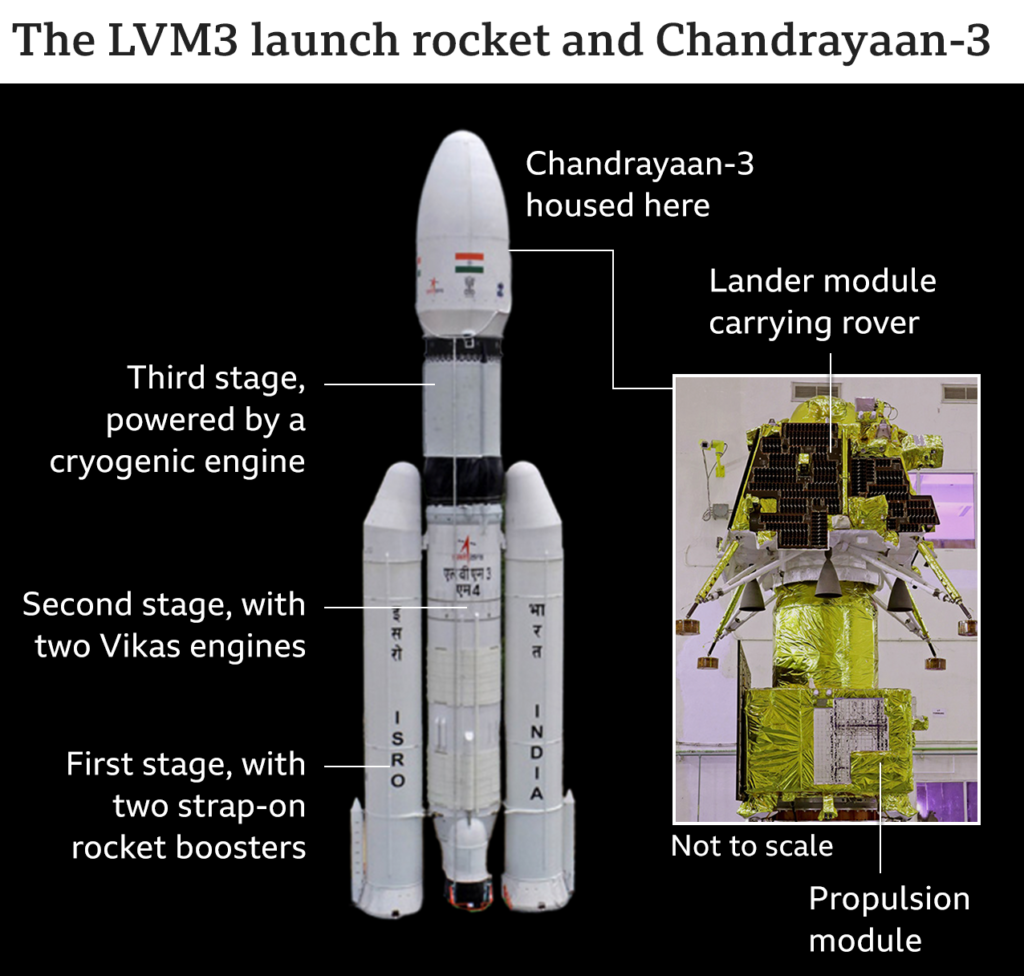
Introduction :
Chandrayaan-3, the third lunar exploration mission by the Indian Space Research Organisation (ISRO), made a historic achievement with a successful landing on Wednesday at 6.04 pm. This remarkable feat brings accolades to ISRO, showcasing their dedication and technological prowess. The live broadcast of the landing process, which commenced at 5.20 pm on the same day, allowed audiences to witness the intricate stages leading to this triumph. This accomplishment signifies a significant advancement in India’s space exploration efforts and opens new avenues for scientific discovery on the lunar surface.
Chandrayaan 3 mission ( works )
Chandrayaan-3 is an upcoming lunar exploration mission by the Indian Space Research Organisation (ISRO) with a focus on the moon’s south pole region. It’s a continuation of India’s space exploration efforts following Chandrayaan-2. Here are the key details of the mission:
Mission Components:
- Lander Module (LM): The Lander is designed to safely land on the moon’s surface and is equipped with scientific instruments and the Rover.
- Rover: The Rover is a robotic vehicle capable of traversing the moon’s surface and conducting scientific experiments.
- Propulsion Module (PM): The Propulsion Module carries the Lander and Rover from Earth to a lunar orbit.
Launch Vehicle: Chandrayaan-3 will be launched into space using the GSLV Mk III (Geosynchronous Satellite Launch Vehicle Mark III), also known as LVM3 (Launch Vehicle Mark-3).
Mission Objectives: The primary objectives of Chandrayaan-3’s mission at the moon’s south pole include:
- Safe Landing at South Pole: Demonstrating the capability of a soft and secure landing on the challenging terrain of the moon’s south pole.
- South Pole Exploration: Exploring the scientific significance of the moon’s south pole region, including its geological and environmental characteristics.
- Rover Mobility and Experiments: Conducting scientific experiments on the moon’s surface through the Rover’s mobility and instrumentation.
Scientific Payloads: The Lander and Rover are equipped with a range of scientific instruments to achieve their objectives, including the exploration of the moon’s south pole:
Lander Payloads:
- Radio Anatomy of Moon Bound Hypersensitive ionosphere and Atmosphere (RAMBHA): Measures plasma density and variations near the lunar south pole.
- Chandra’s Surface Thermo-physical Experiment (ChaSTE): Studies the thermal properties of the lunar surface in the south pole region.
- Instrument for Lunar Seismic Activity (ILSA): Detects and analyzes seismic activities near the landing site.
- Laser Retroreflector Array (LRA): A passive experiment for studying lunar dynamics.
Rover Payloads:
- Laser Induced Breakdown Spectroscope (LIBS): Analyzes the elemental composition of soil and rocks near the south pole.
- Alpha Particle X-ray Spectrometer (APXS): Determines the elemental composition of lunar surface materials at the south pole.
Propulsion Module Payload:
- Spectro-polarimetry of Habitable Planet Earth (SHAPE): Studies Earth from the lunar orbit using spectro-polarimetry.
Mission Timeline:
- Launch: Chandrayaan-3 will be launched aboard the GSLV Mk III rocket from the Satish Dhawan Space Centre SHAR in Sriharikota, India.
- Lunar Orbit Insertion: The Propulsion Module will carry the Lander and Rover to a lunar orbit.
- South Pole Landing: The Lander will perform a controlled landing on the moon’s south pole region.
- Rover Deployment and Mobility: The Rover will be deployed from the Lander and traverse the lunar surface, conducting experiments.
- Scientific Experimentation: Both the Lander and Rover will carry out scientific experiments to collect valuable data from the moon’s south pole.
Mission Duration: Chandrayaan-3’s mission is expected to last approximately one lunar day, equivalent to about 14 Earth days. This timeframe will allow for a focused exploration and scientific investigation of the moon’s south pole.
Communication: The Propulsion Module communicates with ground stations, and the Lander and Rover communicate with each other and with Earth-based stations to transmit the collected data and information.
Chandrayaan-3’s mission to the moon’s south pole holds the promise of unveiling new insights into this unique and less-explored region, contributing to our understanding of the moon’s history, geology, and potential resources.
chandrayaan 3 rover & lander
Vikram ( lander ):
After the fail of chandrayaan 2 ,ISRO made a significant change to the lander module ,now the chandrayaan 3 lander has strong legs than before for safety landing .
- Chandra’s Surface Thermophysical Experiment (ChaSTE): This instrument is designed to analyze temperature and thermal conductivity, providing insights into the Moon’s surface characteristics.
- Instrument for Lunar Seismic Activity (ILSA): Dedicated to measuring lunar seismicity, ILSA will contribute to our understanding of the Moon’s geophysical activity.
- Langmuir Probe (LP): By assessing plasma density, the Langmuir Probe helps to unravel the Moon’s interaction with its environment.
Pragyan ( rover )
- Alpha Particle X-Ray Spectrometer (APXS): The APXS instrument deciphers the chemical composition of lunar materials, shedding light on the Moon’s geological history.
- Laser Induced Breakdown Spectroscope (LIBS): LIBS analyzes the elemental composition of soil and rocks, providing crucial information about the Moon’s surface composition.
- Spectro-polarimetry of Habitable Planet Earth (SHAPE): While not directly related to lunar exploration, SHAPE measures Earth’s spectral characteristics, offering a unique perspective on our home planet.
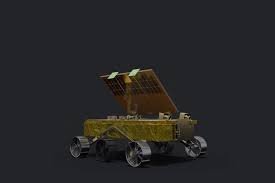
How chandrayaan 3 will help India?
Chandrayaan-3, India’s upcoming lunar exploration mission, holds significant promise for advancing the country’s space ambitions and scientific knowledge. Building on the successes and lessons learned from Chandrayaan-2, this mission aims to contribute to India’s standing in space exploration while expanding our understanding of the Moon.
Chandrayaan-3 is designed to achieve multiple objectives. Firstly, it seeks to demonstrate India’s capability to perform a precise and safe soft landing on the lunar surface, specifically targeting the Moon’s south pole region. This successful landing will showcase India’s technical expertise and enhance its reputation in the global space community.
The mission also aims to advance our knowledge of the Moon’s south pole, an area of increasing interest due to its potential for containing water ice and other resources. Exploring this region could provide insights into the Moon’s geological and environmental history, which could have broader implications for our understanding of planetary evolution.
Moreover, Chandrayaan-3’s Rover, equipped with sophisticated scientific instruments, will conduct experiments to analyze the lunar surface. By studying the elemental composition of soil and rocks, the mission could reveal valuable information about the Moon’s geological makeup and the processes that have shaped it over billions of years.
Chandrayaan-3’s success would foster scientific discovery and innovation within India. The mission is expected to contribute to the development of advanced technologies, paving the way for future interplanetary missions. Furthermore, it could inspire and engage India’s younger generation in the fields of science, technology, engineering, and mathematics (STEM), fostering a culture of curiosity and exploration.
In conclusion, Chandrayaan-3 holds immense potential to elevate India’s status in space exploration, deepen our understanding of the Moon’s south pole region, and stimulate scientific and technological advancement. Through its accomplishments, the mission is set to inspire generations and contribute to India’s journey towards becoming a prominent player in the global space arena.
also read aboutLUNA 25_MISSION
How chandrayaan 3 works?
Chandrayaan-3, India’s lunar exploration mission, works through a series of complex stages involving spacecraft, propulsion, scientific instruments, and precise planning. Here’s a simplified overview of how Chandrayaan-3 works:
Launch: The mission begins with the launch of Chandrayaan-3 using the GSLV Mk III rocket. This launch vehicle carries the spacecraft into space, setting it on its trajectory towards the Moon.
Lunar Orbit Insertion: After reaching space, Chandrayaan-3’s propulsion module (PM) fires its engines to enter a trajectory that will take it towards the Moon. As it approaches the Moon, the spacecraft performs a critical maneuver to enter lunar orbit.
Lander Separation: As Chandrayaan-3 orbits the Moon, the lander module (LM) separates from the propulsion module. The lander is equipped with scientific instruments and the rover.
Descent and Soft Landing: The lander begins its descent towards the lunar surface. Using a combination of engines and thrusters, it gradually reduces its speed to achieve a soft landing. This is a delicate and precise operation, requiring real-time adjustments based on sensor readings.
Rover Deployment: Once the lander has safely touched down, it deploys the rover onto the lunar surface. The rover is a mobile robotic vehicle designed to move across the Moon’s terrain.
Scientific Experiments: Both the lander and rover are equipped with scientific instruments. The lander’s instruments focus on studying the surrounding environment, measuring plasma density, thermal properties, and seismic activities. The rover’s instruments analyze the elemental composition of lunar soil and rocks.
Communication: Throughout the mission, the lander, rover, and propulsion module communicate with Earth-based ground stations. They transmit data, images, and scientific findings back to mission control.
Mobility and Exploration: The rover, powered by solar panels, begins its exploration of the lunar surface. It moves slowly but steadily, conducting experiments, analyzing samples, and sending back information to scientists on Earth.
Mission Duration: Chandrayaan-3’s mission duration is typically about one lunar day, equivalent to approximately 14 Earth days. During this time, the lander and rover perform their scientific tasks while the communication link with Earth remains active.
Objectives: Chandrayaan-3 aims to achieve safe landing, rover mobility, and scientific discovery on the Moon. By exploring the Moon’s south pole region, it contributes to our understanding of lunar geology, resources, and environmental conditions.
In essence, Chandrayaan-3 is a coordinated effort involving advanced technology, precise maneuvers, and scientific instruments to explore and study the Moon’s surface. It represents India’s commitment to space exploration and scientific advancement.
read aboutChandrayaan-3: India’s Pioneering Lunar Exploration
When chandrayaan 3 land on moon?
When chandrayaan 3 land on moon?
On 23th Aug 2023 ,6.04 pm India’s Chandrayaan 3 mission achieved a momentous milestone by successfully landing on the moon’s surface. This remarkable accomplishment marked India’s third lunar mission and showcased the country’s significant progress in space exploration.
After years of planning and technological development, the Indian Space Research Organisation (ISRO) orchestrated the soft landing of Chandrayaan 3. This mission followed the achievements of Chandrayaan 2, which provided vital insights into lunar geology and environment.
Chandrayaan 3’s journey began with a precise launch, guiding the spacecraft toward its lunar destination. The final descent and landing were particularly critical, requiring intricate navigation and autonomous decision-making. Equipped with advanced sensors and cameras, the lander carefully scanned the moon’s terrain to identify a secure landing site.
As the lander executed a controlled descent, mission control teams at ISRO monitored every crucial moment. When the lander softly touched down on the moon, it signified a moment of triumph for India’s space program. The success of Chandrayaan 3 not only expanded our understanding of the moon’s composition but also underscored India’s prowess in space technology.
Chandrayaan 3’s achievement will undoubtedly inspire future generations of scientists and engineers, emphasizing the importance of determination, innovation, and collaboration in pushing the boundaries of human exploration. This lunar landing will forever remain a significant chapter in India’s space exploration narrative.
Is Chandrayaan 3 successful / when chandrayaan 3 will land on moon ?
Is Chandrayaan 3 successful?
The answer is Yes,Chandrayaan-3 achieved a historic landing on Wednesday at 6.04 pm, marking a triumph for the Indian Space Research Organisation (ISRO). The live telecast of the landing process commenced at 5.20 pm on the same day, capturing the meticulous stages leading to this achievement.
conclusion
Chandrayaan-3, ISRO’s third lunar mission, achieves historic success with flawless landing at 6.04 pm on Wednesday. ‘A giant leap for ISRO and India,’ says experts as live broadcast captivates viewers worldwide, showcasing the meticulous landing process that began at 5.20 pm. The achievement reflects India’s space prowess and determination, inspiring future missions. This victory opens doors to new horizons in lunar exploration, emphasizing humanity’s unending odyssey into space.
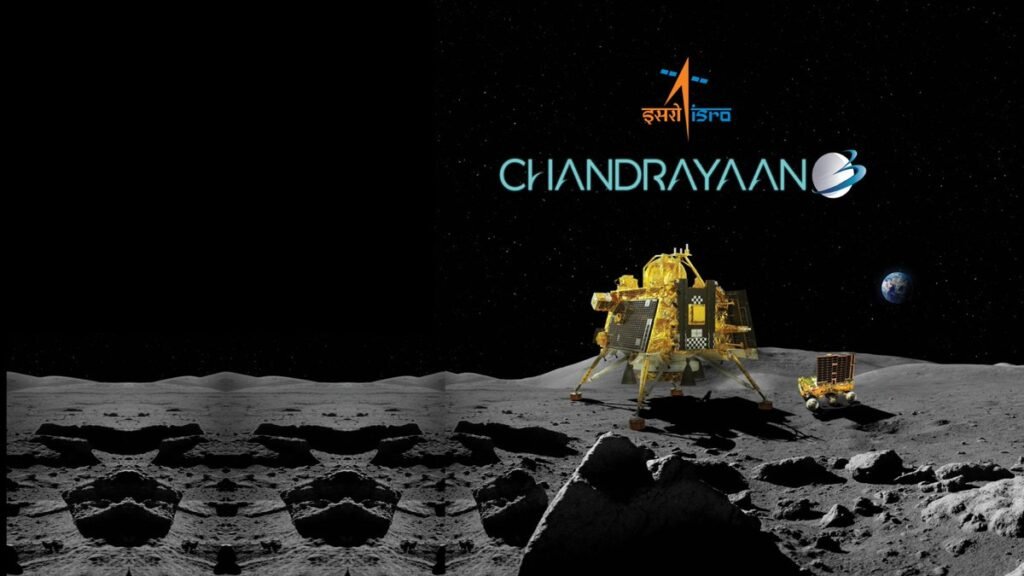
comment on chandrayaan 3
chairman of ISRO ( Somnath )
Commenting on the triumphant touchdown of Chandrayaan-3 on the lunar surface, G Madhavan Nair, the former Chairman of the Indian Space Research Organisation (ISRO), commended the dedicated scientists for their relentless efforts. He underlined the complexity of reaching the lunar South Pole, emphasizing that it is no trivial achievement. Nair acknowledged the immense challenges involved and credited the team for turning this ambitious endeavor into a reality
PM Modi :
Chandrayaan-3 Achieves Historic Moon Landing: India Makes Landmark South Pole Landing
In a monumental feat, India has etched its name in the annals of space exploration by successfully landing Chandrayaan-3 on the lunar South Pole. This remarkable achievement marks India as the pioneer in lunar exploration, as no other nation has achieved this milestone before. Prime Minister Modi extended his heartfelt congratulations to the entire nation and the dedicated team of space scientists who worked tirelessly to make this dream a reality. “This momentous day will be etched in India’s memory for eternity,” proclaimed PM Modi, underlining the significance of this achievement for the country .
president Droupadi Murmu :
On Wednesday, President Droupadi Murmu expressed her profound admiration for the successful lunar landing of Chandrayaan-3, deeming it a “truly momentous occasion.” She emphasized that such a remarkable event occurs only once in a lifetime and conveyed her sentiments of immense pride that it has brought to the entire nation.
CM Naveen Patnaik :
Reacting on the historic success, the Chief Minister said, “This is a tremendous scientific achievement for India. I fully congratulate all the scientists and other experts involved in this historic project.” The Chief Minister watched the landing live on television at Naveen Niwas.
Mamata Banerjee rakesh roshan :😂🤣
Addressing a public gathering, Mamata Banerjee expressed her sentiments, saying, “I extend advance congratulations to ISRO on behalf of the people of West Bengal. It is essential that our scientists receive the credit they deserve, and this credit rightfully belongs to our nation as well. I’m reminded of the time when Rakesh roshan gazed upon India from the moon’s surface, prompting a question from former Prime Minister Indira Gandhi about India’s appearance from such a vantage point.”🙄



